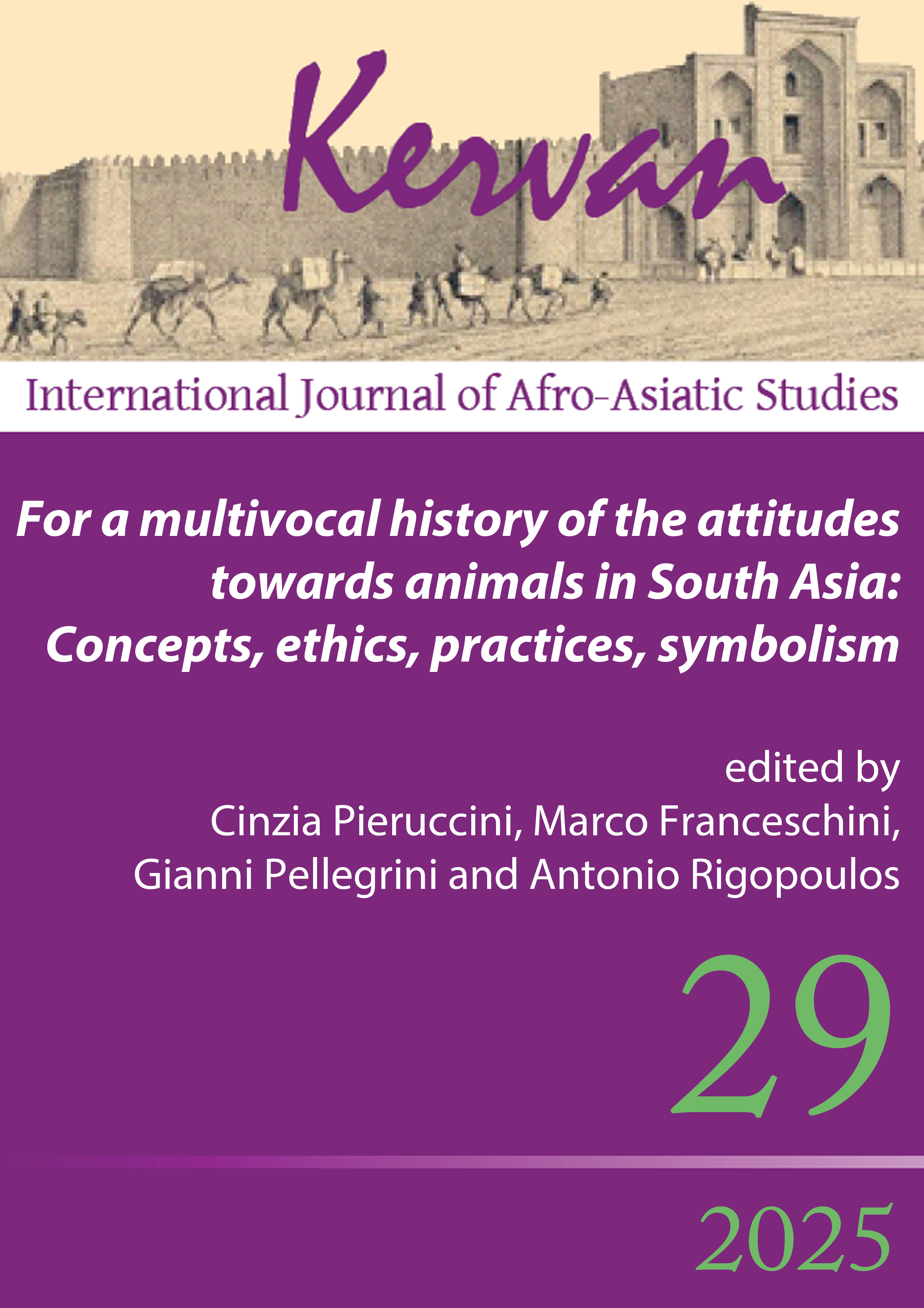Vāhanas on the Bharhut stūpa: Remarks on animal and hybrid figures between art and texts
DOI:
https://doi.org/10.13135/1825-263X/12262Abstract
Through animals, both real and imaginary, something new can be said about human cultural and historical dynamics. As is well known, an animal, be it real or imaginary (hybrid), is associated with most of the Hindu deities as their vāhana. Such a distinctive feature of Hindu divine representations is a phenomenon whose genesis or matrix remains a yet unsolved Indological knot. To shed some light on the issue, a valid research direction seems to be the investigation of attestations relating to the formative phase of the divine ‘vehicles.’
This paper analyses a series of life-size sculptures of yakṣas, yakṣīs, and ‘devatās’ standing on animal, hybrid, and anthropomorphic figures on pillars of the vedikā of the Bharhut stūpa. Many are identified by proper names thanks to the accompanying Brāhmī inscriptions. This undoubtedly reflects their ongoing presence and power in local cults. The monument, constructed suganaṃ raje ‘during the Śuṅga reign’ according to an inscription (CII II/II: 11-12 [A1]), is only partially preserved. Nonetheless, thanks to the richness of its iconographic and epigraphic fabric, it weaves a vivid glimpse into the world of beliefs of the centuries around the turn of the Common Era. These lithic documents are indeed an expression of a tradition that is presumably more ancient than the extant Pāli Canon.
The Bharhut stūpa assumes importance far beyond the domain of ancient Buddhism. It has been argued that this is probably the earliest firm visual evidence of an association between deities and vehicles (van der Geer 2008: 37; Dallapiccola 2012), which, from then on, will be common in South Asian visual arts across regional and religious contexts. While this monument has been the object of several studies, research that systematically investigates these vāhana figures in the light of the iconographic and literary vocabulary of ancient India remains a desideratum. Through the examination of a few textual passages from both Buddhist and Hindu literature, this paper advances some remarks on the formative phase of the vāhana phenomenon.
Downloads
Downloads
Published
Issue
Section
License
Gli autori che pubblicano su Kervan accettano le seguenti condizioni:
- Gli autori mantengono i diritti sulla loro opera e cedono alla rivista il diritto di prima pubblicazione dell'opera, contemporaneamente licenziata sotto una Licenza Creative Commons - Attribuzione che permette ad altri di condividere l'opera indicando la paternità intellettuale e la prima pubblicazione su questa rivista.
- Gli autori possono aderire ad altri accordi di licenza non esclusiva per la distribuzione della versione dell'opera pubblicata (es. depositarla in un archivio istituzionale o pubblicarla in una monografia), a patto di indicare che la prima pubblicazione è avvenuta su questa rivista.


 The articles that have appeared on Kervan since 2016 are rated as Class A in the system of National Scientific Qualification (ASN, disciplines 10/N1 and 10/N3).
The articles that have appeared on Kervan since 2016 are rated as Class A in the system of National Scientific Qualification (ASN, disciplines 10/N1 and 10/N3). The journal has been approved for inclusion in DOAJ. The DOAJ listing of the journal is available at
The journal has been approved for inclusion in DOAJ. The DOAJ listing of the journal is available at  The journal has been approved for inclusion in ERIH PLUS. The ERIH PLUS listing of the journal is available at
The journal has been approved for inclusion in ERIH PLUS. The ERIH PLUS listing of the journal is available at  Kervan was just accepted for indexing in SCOPUS. This important milestone ensures that articles published in Kervan are easily found when searching for library, archives and Information science and it enables Kervan authors to keep track of how often their article has been cited by others.
Kervan was just accepted for indexing in SCOPUS. This important milestone ensures that articles published in Kervan are easily found when searching for library, archives and Information science and it enables Kervan authors to keep track of how often their article has been cited by others.
